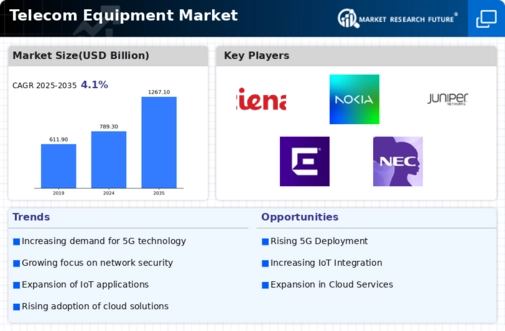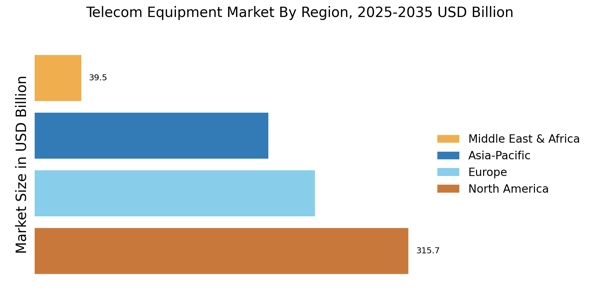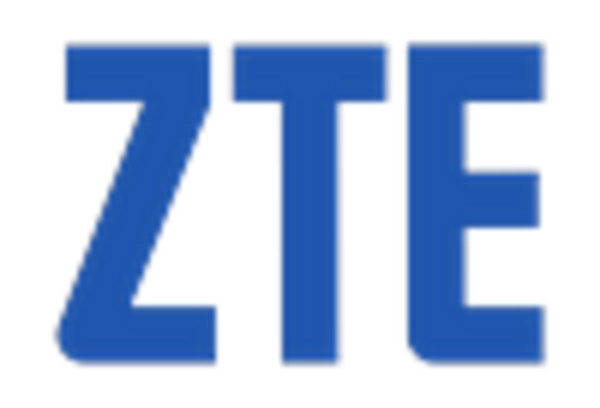Increase in Mobile Data Traffic
The surge in mobile data traffic is a primary driver for the Telecom Equipment Market. As consumers increasingly rely on mobile devices for various applications, the demand for robust telecom infrastructure intensifies. Reports indicate that mobile data traffic is expected to grow exponentially, potentially reaching 77 exabytes per month by 2025. This growth necessitates the deployment of advanced telecom equipment to support higher data rates and improved connectivity. Consequently, telecom operators are investing heavily in upgrading their networks, which in turn propels the demand for telecom equipment. The need for enhanced capacity and speed in mobile networks is likely to continue driving innovation and expansion within the Telecom Equipment Market.
Adoption of Cloud-Based Services
The increasing adoption of cloud-based services is reshaping the Telecom Equipment Market. As businesses migrate to cloud solutions for data storage and application hosting, the demand for telecom equipment that can support these services is rising. This shift necessitates the deployment of advanced networking equipment capable of handling large volumes of data traffic and ensuring seamless connectivity. Market analysis indicates that the cloud services market is expected to grow significantly, which in turn drives the need for telecom infrastructure that can support this growth. Consequently, the Telecom Equipment Market is likely to experience heightened demand as organizations seek to enhance their operational efficiency through cloud-based solutions.
Expansion of Internet of Things (IoT)
The proliferation of Internet of Things (IoT) devices is significantly influencing the Telecom Equipment Market. With billions of devices expected to be connected in the coming years, the demand for reliable and efficient telecom infrastructure is paramount. It is estimated that by 2025, there could be over 75 billion IoT devices globally, necessitating advanced telecom equipment to manage the increased data flow and connectivity requirements. This trend compels telecom operators to invest in scalable solutions that can accommodate the diverse needs of IoT applications, from smart homes to industrial automation. As such, the expansion of IoT is likely to be a critical driver for growth in the Telecom Equipment Market.
Government Initiatives and Investments
Government initiatives aimed at enhancing telecommunications infrastructure are playing a crucial role in the Telecom Equipment Market. Many governments are recognizing the importance of robust telecom networks for economic growth and social development. Investments in broadband expansion and 5G deployment are becoming increasingly common, with several countries allocating substantial budgets to improve connectivity. For instance, initiatives to provide universal broadband access are expected to drive demand for telecom equipment, as new infrastructure is required to support these goals. Such government-backed projects not only stimulate market growth but also encourage private sector investment in the Telecom Equipment Market.
Rising Demand for Enhanced Connectivity Solutions
The growing demand for enhanced connectivity solutions is a significant driver of the Telecom Equipment Market. As businesses and consumers alike seek faster and more reliable internet access, telecom operators are compelled to upgrade their equipment and services. The shift towards remote work and digital services has further amplified this demand, with many organizations requiring robust connectivity to support their operations. Market data suggests that the demand for high-speed internet is projected to increase, leading to a surge in investments in telecom infrastructure. This trend is likely to foster innovation and competition within the Telecom Equipment Market, as companies strive to meet the evolving needs of their customers.

















Leave a Comment